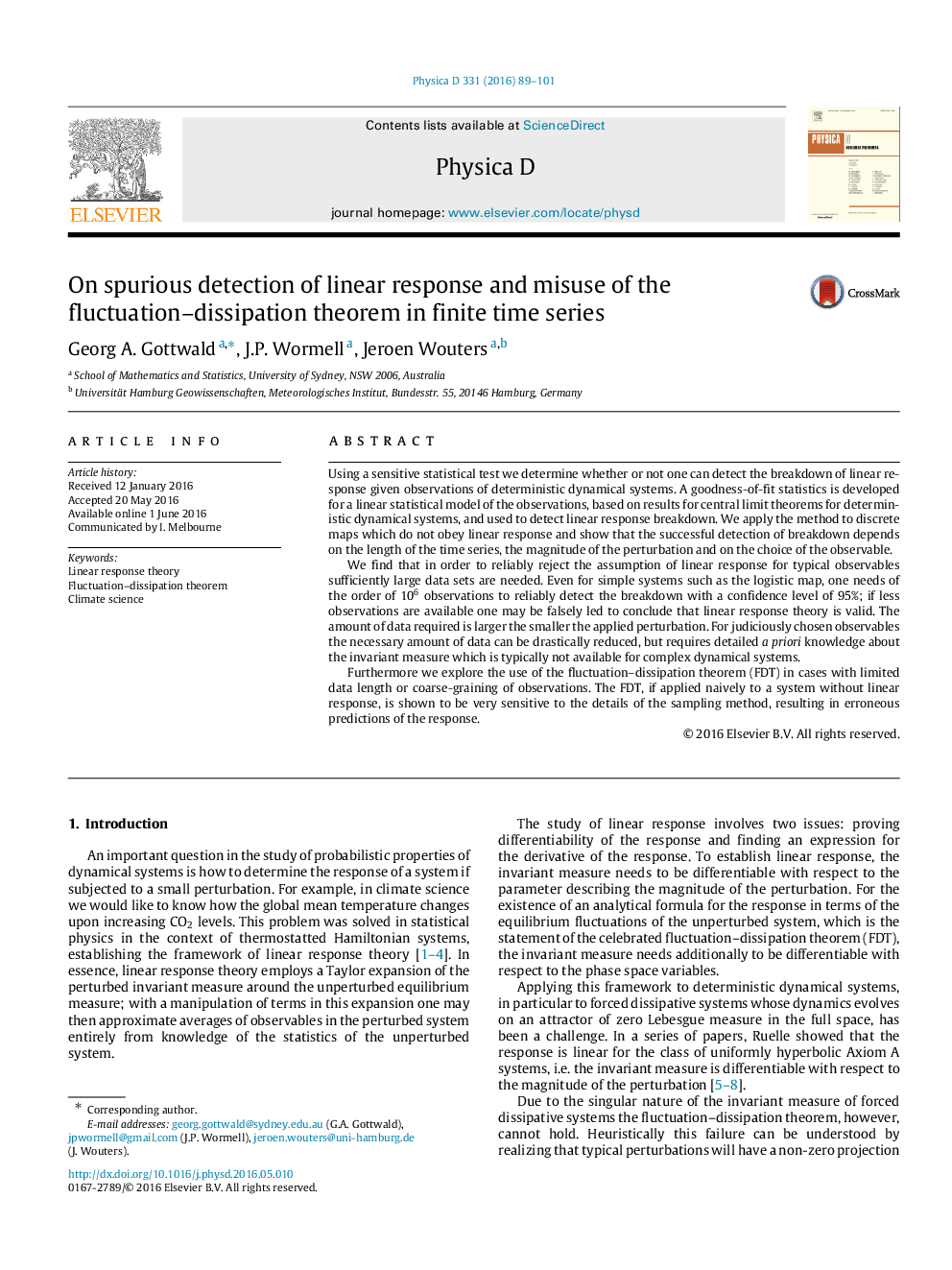| کد مقاله | کد نشریه | سال انتشار | مقاله انگلیسی | نسخه تمام متن |
|---|---|---|---|---|
| 1899178 | 1533987 | 2016 | 13 صفحه PDF | دانلود رایگان |
Using a sensitive statistical test we determine whether or not one can detect the breakdown of linear response given observations of deterministic dynamical systems. A goodness-of-fit statistics is developed for a linear statistical model of the observations, based on results for central limit theorems for deterministic dynamical systems, and used to detect linear response breakdown. We apply the method to discrete maps which do not obey linear response and show that the successful detection of breakdown depends on the length of the time series, the magnitude of the perturbation and on the choice of the observable.We find that in order to reliably reject the assumption of linear response for typical observables sufficiently large data sets are needed. Even for simple systems such as the logistic map, one needs of the order of 106106 observations to reliably detect the breakdown with a confidence level of 95%95%; if less observations are available one may be falsely led to conclude that linear response theory is valid. The amount of data required is larger the smaller the applied perturbation. For judiciously chosen observables the necessary amount of data can be drastically reduced, but requires detailed a priori knowledge about the invariant measure which is typically not available for complex dynamical systems.Furthermore we explore the use of the fluctuation–dissipation theorem (FDT) in cases with limited data length or coarse-graining of observations. The FDT, if applied naively to a system without linear response, is shown to be very sensitive to the details of the sampling method, resulting in erroneous predictions of the response.
Journal: Physica D: Nonlinear Phenomena - Volume 331, 15 September 2016, Pages 89–101
